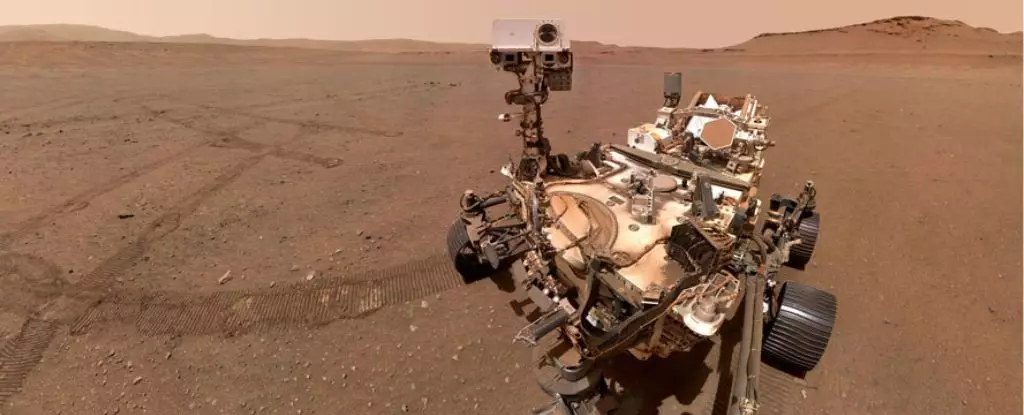NASA’s Mars Sample Return mission has long been positioned as a cornerstone of planetary science, designed to bring back dust and rock samples from the Martian surface. Initially, the ambition was to deliver thirty carefully collected sample tubes to Earth by the 2030s. However, recent announcements indicate that the mission is encountering a multitude of challenges, primarily related to rising costs and logistical complexities. As a result, NASA is now exploring collaborations with private aerospace companies, specifically Elon Musk’s SpaceX and Jeff Bezos’s Blue Origin, to streamline operations and cut expenses.
The Mars Sample Return program is emblematic of the challenges inherent in space exploration. Originally estimated to cost around $11 billion, an independent audit has indicated that current projections now place that figure between $6.6 billion and $7.7 billion under a revised plan involving NASA’s proven Sky Crane technology. This staggering shift illustrates the financial pressures facing the mission, prompting NASA to take a step back and reconsider its strategies. The decision to potentially engage commercial partners like SpaceX and Blue Origin not only reflects the need for cost-effective solutions but also illustrates a growing trend of public-private collaborations in modern space exploration.
Despite these adjustments, timelines are still tenuous, with the return of Martian samples now looking towards the years ranging from 2035 to 2039. This represents a slight acceleration from earlier estimates of 2040, although it remains significantly delayed compared to the original plans. NASA’s shifting timelines underscore the intricate ballet of funding, technological readiness, and international competition associated with such high-stakes missions.
Adding another layer of complexity is the rapid progress being made by China on its own Martian sample return mission, which may achieve liftoff as early as 2028. As reported by state media, China’s approach to a “grab-and-go” sample acquisition aims to simplify the challenges posed by Mars exploration. Should China succeed first, it could redefine global perceptions of leadership in space exploration, not to mention implications for future collaborative efforts.
During a recent briefing, outgoing NASA Administrator Bill Nelson emphasized the unmatched complexity of NASA’s Mars Sample Return mission, suggesting that it is fundamentally more ambitious than China’s simpler venture. Nelson’s insistence on the mission’s scientific rigor speaks to the pride and meticulous planning that the U.S. space agency brings to the table. Still, the once-certain trajectory of NASA’s Mars ambitions is now facing a potential comparative setback.
To facilitate the sample return, NASA is evaluating two main landing architectures: the classic Sky Crane system that has been utilized successfully in previous missions, and a heavy-lift lander potentially developed in partnership with a commercial entity. Both options come with their own sets of advantages and risks; the tried-and-true methods of the Sky Crane offer a level of confidence, while a commercial heavy-lift lander could leverage modern innovations and economies of scale.
This dual approach is a recognition by NASA that innovation does not always have to come from within. By incorporating commercial technologies, NASA could effectively drive down expenses while enhancing the technological robustness of their mission. Furthermore, a nuclear battery is being assessed as a cleaner energy source for landers instead of solar panels, which historically have struggled with Martian dust storms—demonstrating the creative problem-solving ongoing within the agency.
The challenges facing NASA as it seeks to return samples from Mars represent a larger narrative in space exploration, emphasizing the importance of adaptability, partnerships, and international dynamics. As the timeline continues to shift and partnerships are explored, the agency must navigate its path with both ambition and pragmatism. With commercial enterprise possibly at the helm of space exploration, the future of Mars missions, and indeed planetary science as a whole, could take on innovative dimensions that have yet to be imagined. Ultimately, the quest for Martian rocks might be more than just a scientific endeavor—it could exemplify a collaborative vision for humanity’s future in space.

